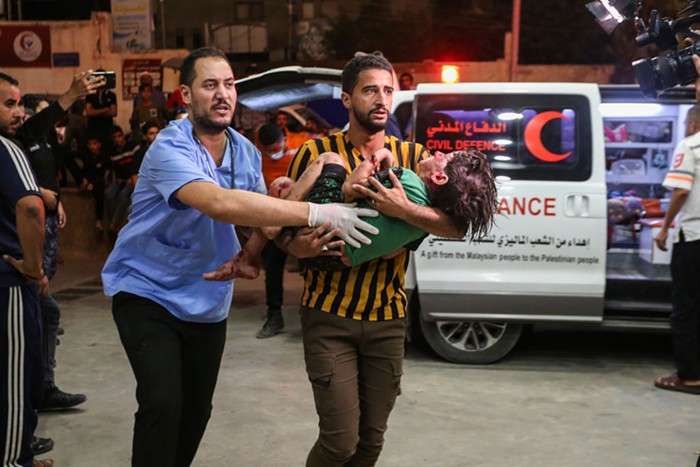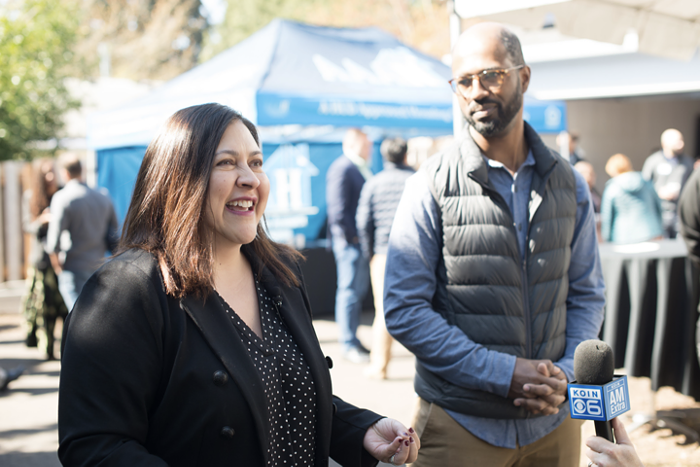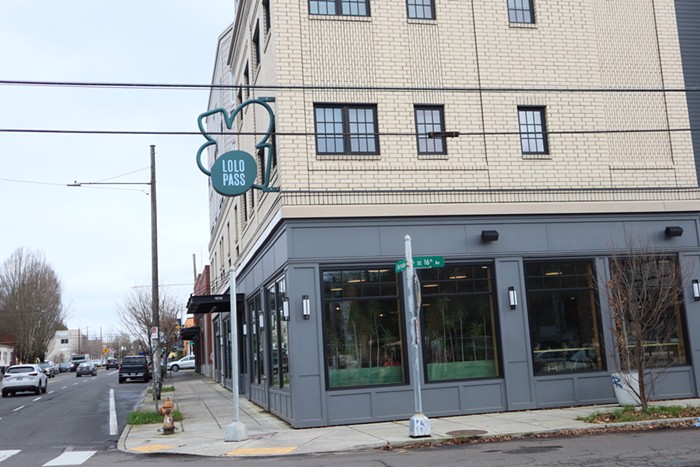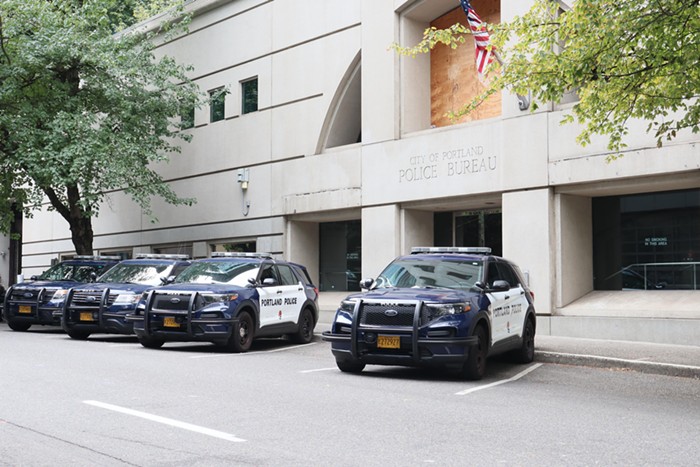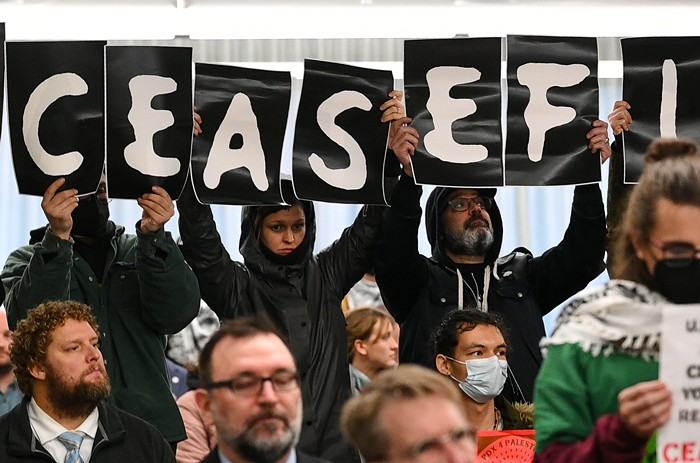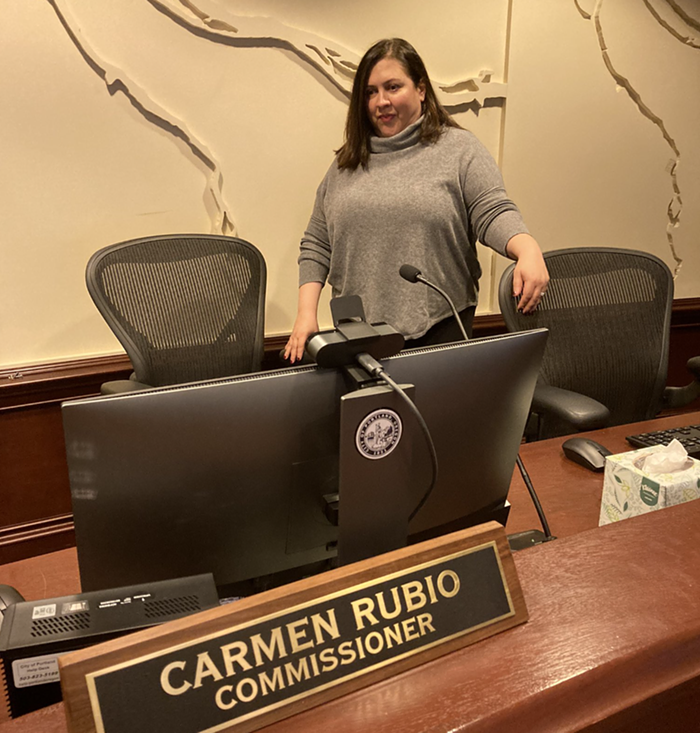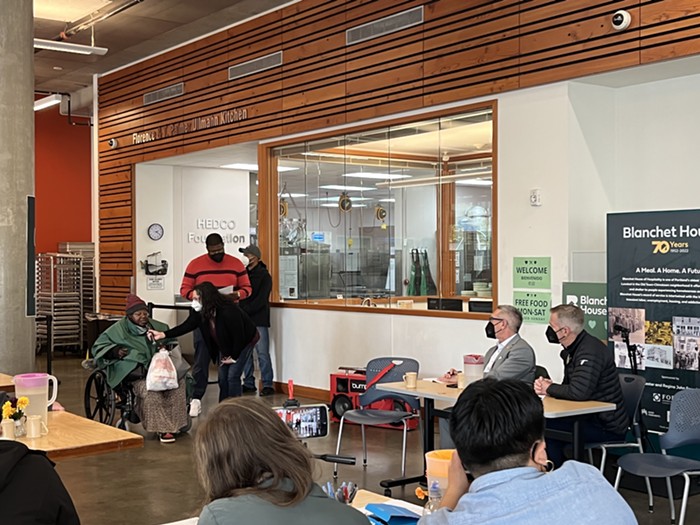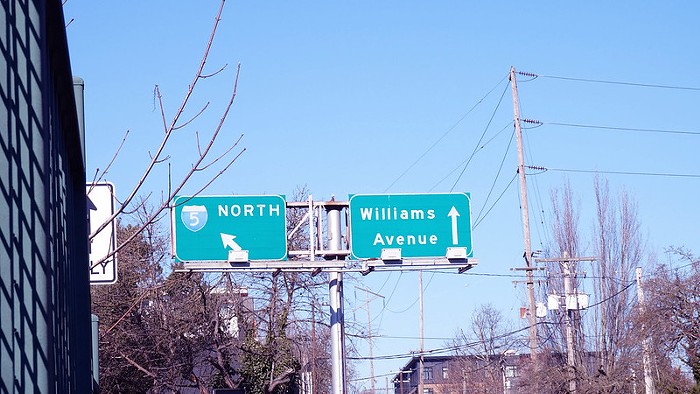A FELLOW named Daniel Fox—at least that's who he said he was—had come to the emergency room at Portland's Adventist Medical Center on a humdrum Sunday in February because he thought two men were following and maybe trying to kill him.
Fox admitted he was three days down from a meth binge, and he had the oozing, pockmarked arms of an addict who couldn't stop picking at his skin. He was nervous. Antsy. Refusing to have his vitals checked. And he made the hospital staff nervous in turn.
Around 7 pm, he was sent back to a part of the ER known as "security lane." Adventist is known for its mental health intake facility, and that's where the psych cases, or the people coming down from drugs, wait to see if they qualify for a police hold.
The long wait was grinding on Fox. He spent a lot of time telling one guard, Richard Butler, all about the men he thought were chasing him, down to describing their clothing. In between, he'd settle down and talk about sports. At one point, he said, "Tonight is not a bad night to die."
Two hours later, it was guard Carol Graff's turn to mind Fox and attempt what coworkers call "her mom routine." He wasn't thirsty and he didn't need a blanket, so she started in on paperwork. But by 9:20 pm, Fox had changed. He was eerily calm, like "Cool Hand Luke," Graff says. And he said he had a gun. And he wanted out.
What no one knew—and most wouldn't know for days afterward—was that "Fox" was really Merle Mikal Hatch, a federal fugitive who skipped a flight to Colorado where he was supposed to finish out a sentence for bank robbery. He also was unarmed. He had taken a black phone handset from his room, smashed it, and then did what robbers do: He pretended it was a gun and pulled off the con very convincingly.
About 15 minutes later, Hatch was dead in the hospital's parking lot—hit by six bullets in what became Portland's first fatal police shooting since the summer of 2012.
Hatch's death had already been captured on a cell phone video, but grand jury transcripts released last week finally fill in the picture of what led Hatch to Adventist in the first place. They also give the first hints at how the three cops who killed him tried to manage a quickly changing confrontation—including at least one instance where Hatch pointed his black handset at cops without reprisal—before they fired their guns.
Those three officers, Sergeant Nathan Voeller, Officer Andrew Hearst, and Officer Royce Curtiss, have all been cleared of criminal wrongdoing.
"I could not tell you what he was saying. But it looks like, psychologically, he's preparing for a fight," Voeller testified. "And he is now pointing that gun at us and he's yelling. Again, I have never been in that situation. And I hope to never be in that situation again."
_________________________________________________________________________________________
The first report that Hatch was armed came from Adventist's Graff. In the hallway, as he demanded she use her badge to swipe him out of "security lane," he raised his shirt several times and backed up his threats by showing off what she assumed was a gun in his waistband.
Graff decided to be as sweet as possible as the two made their way through the emergency department's hallways to the automatic doors that would dump him into the parking lot outside.
Graff finally felt safe enough to get on her radio and call in a "Code Silver," putting the hospital on a state of alert and near lockdown.
_________________________________________________________________________________________
It was days later when Graff, watching the news, saw the cell phone video of Hatch's death and learned he wasn't actually armed. If Hatch had been checked in, he'd have been searched and dressed in a hospital gown. It would have been obvious that he didn't have a gun.
Instead, on the way out, Hatch had teased Graff about what he felt was an oversight.
"And then I took a deep breath and said, 'Okay, he had no gun. What position is that going to put me in? What did I see in his waistband?'" she testified. "So that kind of shook my psyche a bit."
_________________________________________________________________________________________
Hatch, meanwhile, was weaving through a loading dock. That was about when he reunited with Butler. Butler was 10 minutes into his shift patrolling the grounds in a marked pickup truck when he heard Graff's alert about an armed patient, immediately knowing who it was.
Butler was worried. But remembering Hatch's arms and his disheveled, agitated state, he didn't figure Hatch had a gun. It had to be a pocketknife, he says. If he'd scared up enough money for a gun, Butler guessed, he'd have been more likely to have spent it on meth.
But then came a radio update about Hatch having a gun, with the cops on the way. Any lingering doubt vanished when Butler said he saw Hatch, out in the lot, draw something black and point it directly at him.
And Butler got on the radio and added to the chorus of convincing reports about a man with a gun.
_________________________________________________________________________________________
Sergeant John Clinton was among the first cops to arrive. He had a citizen in his cruiser, on a ridealong, and told him to keep his head down before getting out to meet up with other cops.
Hearst remembered an early call for a "long gun" at Adventist, code for an AR-15 sniper rifle. So did Officer Thomas Clark, who also brought his rifle. Voeller, the shift sergeant that night, had showed up by then. And so had Curtiss, an ex-Marine still relatively new to the bureau, dispatched to help out as a cover officer. Officer Richard Budry and John Anderson, a longtime sergeant filling in as an acting lieutenant, joined them.
Several cops said they saw Hatch gripping what looked like a black handgun, cupping his hand and holding his arm steady.
It fell to Voeller to try taking charge while making sense of what he was seeing: Hatch, pacing "like a gorilla in a cage... trying to make himself look big." Soon after, Voeller had one of the great scares of his career.
"At one point, he takes a gun and he points it straight at us as he's walking, in his right hand, and he's making these noises," Voeller testified. "Thirteen years of police work, I have never been in that situation before."
Could he have shot Hatch right then and there? Maybe, he says. But Voeller, a former defensive tactics instructor, decided that even though Hatch was "an immediate threat," he was far enough away to be left alone.
"We were still trying to de-escalate the situation,” he says, “and look for other reasonable means to end it peacefully."
_________________________________________________________________________________________
Voeller almost got his wish. At one point, with Hatch some 25 yards away, Voeller told Curtiss to come over with a less-lethal beanbag shotgun. "I was thinking this may be the moment," he says.
But as soon as the idea came, Hatch loped back out of range. The opportunity vanished as quickly as it arrived.
And then, after a few minutes, Hatch had climbed atop a red Toyota 4Runner.
By now, the officers who'd penetrated the parking lot had split up. Voeller and Hearst stood behind a Toyota Avalon, with the rest taking cover behind patrol cars.
The cell phone video, taken from a nearby nursing school dormitory, would show Hatch swearing and daring the cops to come after him.
None of the cops, who were 80 or so yards away, said they could hear him. But they could see he was agitated, and having someone armed and taking high ground was a terrifying prospect.
Voeller says he still nursed hopes of a peaceful outcome. He wanted to call the bureau's tactical team. He called for police dogs and a surveillance airplane and said he wanted Project Respond. He thought Hatch might be spinning down.
"If he continues to relax," Voeller testified, "we can get those mental health workers in there."
That was when Hatch made his move.
He leaped down and sprinted toward Voeller and Hearst—all while counting down from three, ominously, and waving the phone handset. Clinton said he barked at Hatch to stop. He didn't listen.
Voeller and Curtiss, standing off to the side, fired a total of 14 shots from their 9mm Glock 17s. Hearst fired five from his rifle. Six bullets hit Hatch, with two doing him in: one piercing his right lung, the second pulverizing his liver and a kidney.
Voeller, up until the end, had been hoping the police dog would show, distracting Hatch or even taking him down.
"It happened so fast," said Voeller, who shot a man in 2006 in weirdly similar circumstances.
_________________________________________________________________________________________
After Hatch fell, with "hot breath steam coming out of his mouth," Anderson ordered cops to grab a ballistic shield and creep closer.
But what if Hatch was faking? Should they hit him with a beanbag?
Curtiss, though he was supposed to step aside after using deadly force, still had his beanbag shotgun and was ready to use it. Instead, they sent in a police dog. The dog bit Hatch and dragged him a couple of feet. His chest was moving, haltingly up and down, but he didn't respond.
"Have medical fucking come in here any second," one officer, unidentified, said in transcripts of radio chatter.
Cops patted Hatch down and decided he really was dying. They didn't handcuff him. They gave way to paramedics who arrived almost immediately and gamely tried CPR.
The man who called himself Fox in the emergency room had nothing on him besides the phone handle. No ID. Just fingerprints. And that's how authorities finally figured out who it was they'd actually shot.

